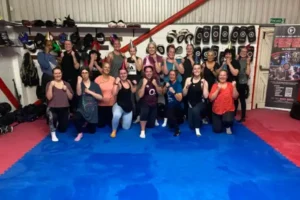
Got questions? We’ve got answers.
Brazilian Jiu-Jitsu (BJJ) is a martial art that focuses on ground fighting and submission grappling. It emphasizes using leverage, technique, and timing to control and submit an opponent, making it highly effective even for smaller individuals. BJJ practitioners typically train in either the Gi (kimono) or No-Gi (athletic wear) formats. You can explore BJJ gyms and learn about the various styles and philosophies of the academies around the world by visiting MartialArtsGlobal.com, where you’ll find comprehensive information on BJJ training locations.
The best way to find an academy near you is to use a directory like MartialArtsGlobal.com. Our platform provides a detailed list of BJJ gyms worldwide, along with essential information like class schedules, coach profiles, and contact details. This allows you to research gyms near you, read reviews, and make an informed decision about where to begin your BJJ journey.
Choosing the right BJJ gym depends on various factors such as the gym’s culture, coaching style, class schedule, and your personal goals (e.g., competition, fitness, self-defense). At MartialArtsGlobal.com, you can view detailed profiles of gyms, check for reviews, and even contact instructors directly to ask specific questions before making your decision.
Accordion Content
For your first BJJ class, you should bring:
– A Gi (if attending a Gi class) or appropriate athletic wear for No-Gi training.
– A belt (if you’re starting in the Gi class and have a rank).
– A water bottle to stay hydrated.
– A towel for cleaning up after class. You can also use MartialArtsGlobal.com to search for nearby martial arts stores that provide top-rated BJJ gear at competitive prices, ensuring you get the best equipment for your training.
How often you train in BJJ depends on your personal goals. Beginners may start with 2-3 times a week to build foundational skills. More experienced practitioners training for competition might train 4-5 times a week. Use MartialArtsGlobal.com to explore gyms and their class schedules, and choose one that aligns with the frequency that fits your personal commitment and goals.
BJJ is suitable for all age groups. Many gyms offer classes for children, teens, adults, and even seniors, with different training intensities and objectives. To find BJJ gyms that cater to specific age groups, visit MartialArtsGlobal.com and filter your search by age, class type, and location.
Gi training involves wearing a traditional kimono (gi), allowing practitioners to use the gi for grips, submissions, and control techniques. No-Gi training uses athletic wear (such as rash guards and shorts) and focuses on different techniques where grips are less common. To find gyms that offer either Gi or No-Gi classes, check out the available listings at MartialArtsGlobal.com, which will provide clear distinctions between class offerings.
No, you do not need previous martial arts experience to start Brazilian Jiu-Jitsu. Most BJJ gyms offer beginner classes for those with no martial arts background. MartialArtsGlobal.com can help you find gyms that cater specifically to beginners, offering a welcoming environment for newcomers to the sport.
Many BJJ gyms offer trial classes or free introductions to help you experience the training environment before committing to a membership. Visit MartialArtsGlobal.com to browse gyms near you that offer these introductory options, allowing you to find the right fit for your needs.
The BJJ ranking system typically includes the following belts: White, Blue, Purple, Brown, and Black. The time it takes to advance through these belts can vary, but it typically takes about 2-3 years to achieve Blue belt, 4-5 years for Purple, and many years for Black belt. You can find gyms offering specific belt progression programs and read reviews about the belt promotion process at MartialArtsGlobal.com.
Accordion ConteYes, many BJJ academies allow visiting practitioners from other gyms to train. Some gyms even have affiliate programs that enable you to train at their sister gyms worldwide. If you’re traveling or relocating, MartialArtsGlobal.com is a great way to find BJJ gyms in your destination city and inquire about guest memberships.nt
Some BJJ gyms offer online classes or provide digital resources such as video tutorials and seminars. You can find BJJ academies that offer online learning options or hybrid programs through MartialArtsGlobal.com, which lists gyms with remote training options for both beginners and advanced practitioners.
To purchase BJJ gear such as a Gi, rash guards, belts, and other training equipment, you can visit specialized martial arts stores. MartialArtsGlobal.com provides a directory of trusted equipment stores, where you can compare prices, read reviews, and purchase the best gear for your training needs.
While Jujitsu covers a wider spectrum of techniques including strikes, throws, and joint locks, Brazilian Jiu-Jitsu specializes in ground grappling and submissions. Both arts have their own historical significance and offer valuable skills for self-defense and martial arts enthusiasts. Please see this site for a more in depth overview- https://shaddockmma.com/2023/08/19/whats-the-difference-between-jujitsu-and-brazilian-jiu-jitsu
Register your coffee-related business and connect with others in the industry.
Have questions or suggestions? We’d love to hear from you.
Fast Response • Friendly Support
We value your feedback
Subscribe to our newsletter for the latest updates and features.
© 2022 UAE Coffee Connect. All rights reserved.